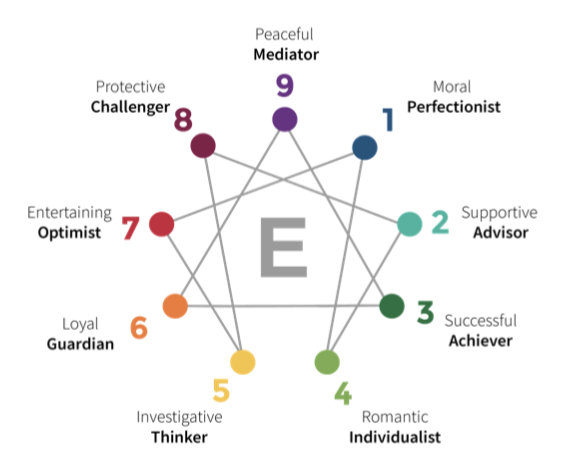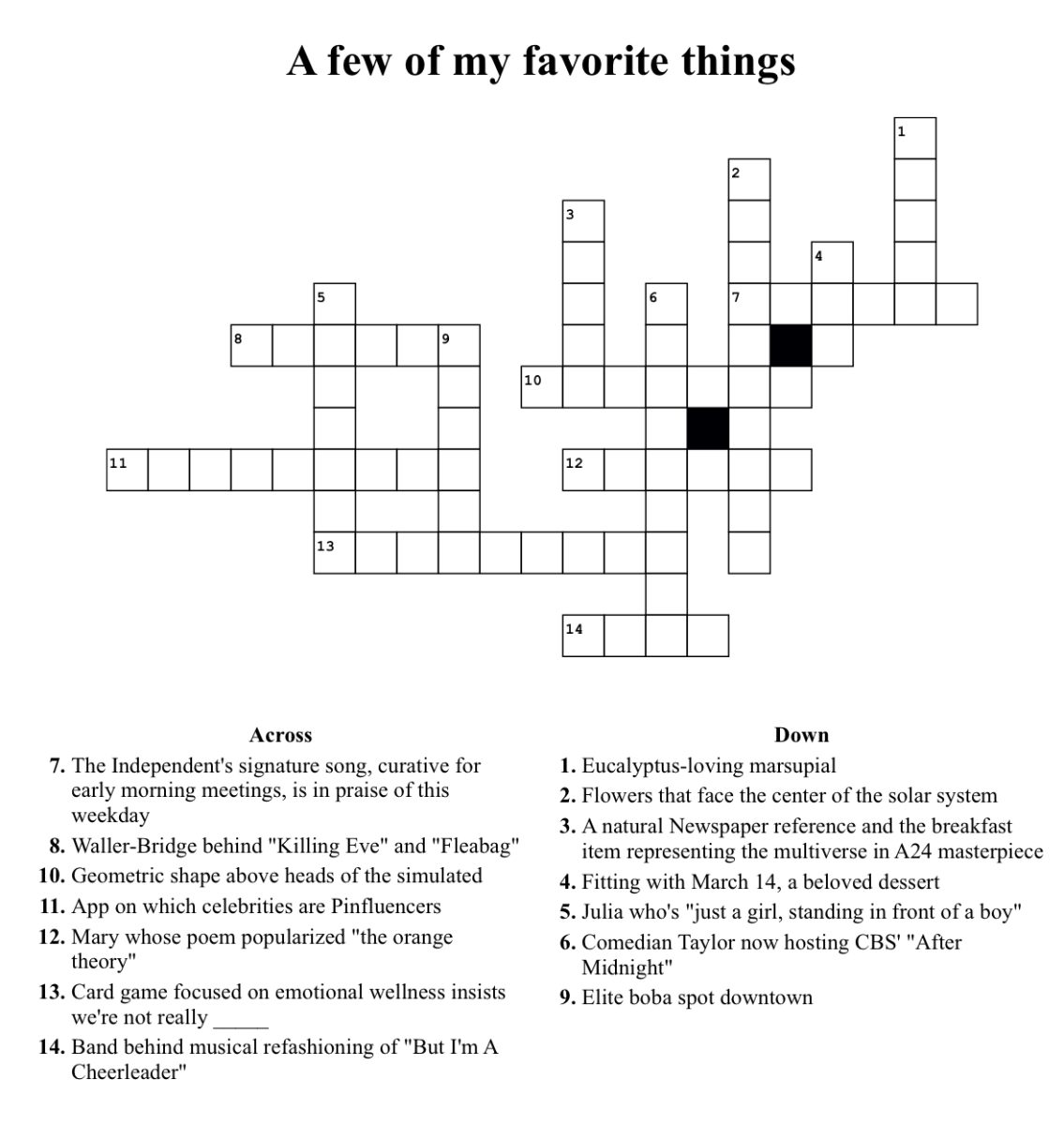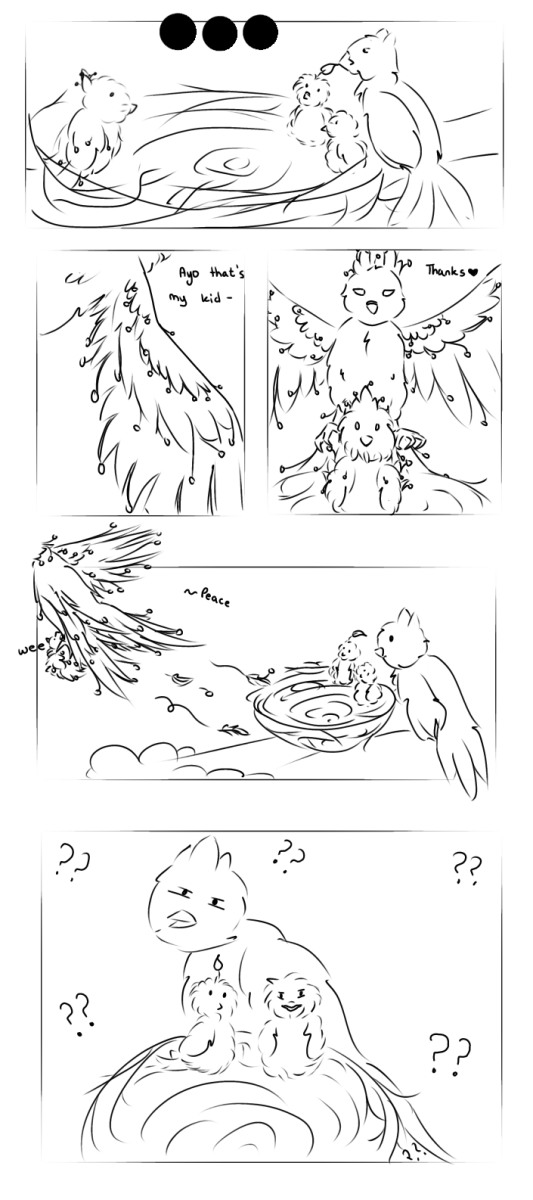The Enneagram Personality Test

November 22, 2021
The Enneagram has recently been one of the trending topics in the personality test world. This nine-point geometric structure is aimed to pinpoint motivations, fears, and desires.
Here is a basic overview of each of the nine types. Take the official test at this link: https://www.truity.com/enneagram, and come back to read about your enneagram type!
Type 1: The Idealist
Type 1 individuals tend to be rational and judicial in their behavior. They usually have a rigid set of morals that dictate their lifestyle and their decisions and have a strong sense of right and wrong. Enneagram 1s are practical and wish to be useful. They may feel like they have a ‘mission’ to fulfill in life.
Basic Goal: The basic desire of the Type 1 is for order and accuracy. This is shown in how they tend to be advocates for the rights of others and push for reform and equality.
Basic Fear: The basic fear of the Type 1 is being out of control, especially in situations of injustice.
Strengths:
- Being motivated by personal values
- Awareness and attention to detail
- Idealistic worldview
Weaknesses:
- Perfectionism to a fault
- Difficulty accepting hard realities
- Being highly critical of themselves and others
Examples: Michelle Obama, Plato, Celene Dion, Kate Middleton
Type 2: The Helper
Type 2 individuals are generous, altruistic, and empathetic. They are driven to connect with the world and with as many people as they can. They also may repress their own negative emotions in order to be perceived as more desirable. Enneagram 2s are nicknamed ‘the helper’ because of the large amount of love and concern they feel for others. People are usually drawn to their kind nature and are enlivened with their appreciation.
Basic Goal: The basic desire of the Type 2 is to be loved and accepted. They aim to reach this goal by tending to the needs of others.
Basic Fear: The basic fear of the Type 2 is being unwanted and unloved. They may believe that love is only earned by serving others.
Strengths:
- Supporting those around them
- Ability to naturally recognize the needs of others
- Persistence in all environments
- A drive to get to know others
Weaknesses:
- Seeking approval from others
- Toxic positivity
- Being perceived as overbearing
- Difficulty acknowledging their own needs
Examples: Nancy Reagan, Stevie Wonder, Eleanor Roosevelt
Type 3: The Achiever
Type 3 individuals are ambitious, enthusiastic, and adaptable. They are driven to set and accomplish their goals and tend to adjust their roles and actions to fit every setting they are in.
Basic Goal: The basic desire of the Type 3 is to feel valued. They seek accomplishment and admiration, usually by doing whatever it takes to earn validation and praise from those around them.
Basic Fear: The basic fear of the Type 3 is failure. Individuals who are a Type 3 may believe that in order to be worthy or perceived as successful they must succeed.
Strengths:
- A strong drive to accomplish and succeed
- Confidence especially in professional settings
- Practical thinking
Weaknesses:
- Difficulty accepting failure
- Perfectionism to a fault
- Being perceived as overly competitive
Examples: Michael Jordan, Taylor Swift, Bill Clinton
Type 4: The Individualist
Type 4 individuals tend to be creative, sensitive, and expressive. They desire to find their own identity and have a significant impact on the world.
Basic Goal: The basic desire of the Type 4 is to have their own identity and self-expression.
Basic Fear: The basic fear of the Type 4 is that they do not matter or have a significant impact on society. They may often feel disconnected and misunderstood if others don’t recognize them for who they are.
Strengths:
- Sensitivity to other’s feelings
- Philosophical and ‘out of the box’ thinking
- A creative mind
Weaknesses:
- Reacting strongly to hardship
- Withdrawing in difficult situations
Examples: Edgar Allan Poe, Johnny Depp, Angelina Jolie
Type 5: The Investigator
Type 5 individuals are curious, independent and observant. They seek a deeper understanding of the world around them and crave knowledge.
Basic Goal: The basic desire of the Type 5 is to feel helpful. They express this by actively pursuing new skills, and trying to have everything ginger
Basic Fear: The basic fear of Type 5 is being useless. They also fear being overwhelmed by their own needs and the needs of others. Therefore, they tend to withdraw from relationships and maintain a minimalist view and lifestyle.
Strengths:
- Thinking complexly
- Ability to remain calm in a crisis
- Drive and perseverance
- How they are constantly learning
Weaknesses:
- Difficulty relating to the emotions of others
- Being perceived as condescending
- Isolation from others
Examples: Albert Einstein, Agatha Christie, Emily Dickinson
Type 6: The Loyalist
Type 6 individuals tend to be engaging, responsible, and vigilant. They are defined by their need for safety and security and seek to anticipate risk. They are very loyal and driven, and aim to build close relations with others. They are usually always thinking ahead to prepare for what could possibly go wrong in a situation.
Basic Goal: The basic desire of the Type 6 is to feel secure and in control. They seek this through their loyalty to others, and usually work hard to build strong relationships with those around them.
Basic Fear: The basic fear of Type 6 is losing stability. They tend to have an ‘expect the worst, hope for the best’ mentality.
Strengths:
- Making responsible decisions
- Able to consider both logic and emotion
- Recognizing other perspectives
Weaknesses:
- Difficulty controlling anxiety
- Expecting the worst outcome
- High levels of insecurity and doubt
Examples: Marilyn Monroe, Ellen Degeneres, Princess Diana
Type 7: The Enthusiast
Type 7 individuals are adventurous, spontaneous, and versatile. They appear to be lively, fun-loving, and optimistic. They are defined by their desire to experience anything and everything, going out of their way to avoid boredom.
Basic Goal: The basic desire of the Type 7 is to feel satisfied. They are usually goal-oriented and will go to great lengths to seek excitement and joy from new experiences.
Basic Fear: The basic fear of the Type 7 is that they may miss out. They express this by avoiding concrete plans and schedules to allow for last-minute opportunities. They are often busy and actively seeking out fun experiences to avoid this.
Strengths:
- High levels of energy
- Ability to see many possibilities
- Quickly acquiring new skills and abilities
Weaknesses:
- Difficulty committing
- Growing bored easily
- Impulsivity
Examples: Thomas Jefferson, Joe Biden, Leonardo DiCaprio
Type 8: The Challenger
Type 8 individuals are assertive, dominant, and self-confident. They are challenging and are fiercely independent, and advocate against injustice. They work to protect themselves and remain in control of their own destiny, and feel a desperate need to control their environment.
Basic Goal: The basic desire of the Type 8 is to be in control of their own life.
Basic Fear: The basic fear of the Type 8 is being controlled by others.
Strengths:
- Ability to act decisively quickly
- Fair and logical decision making
- Effective leadership
- Denying vulnerability
Weaknesses:
- Difficulty following orders
- Disregarding others’ opinions
Examples: Donald Trump, Serena Williams, Frank Sinatra
Type 9: The Peacemaker
Type 9 individuals are creative, accepting, and supportive. They strive to be in harmony with themselves and the people around them. Usually optimistic, stable, and trusting, they are intent on avoiding conflict and preserving things as they are. Enneagram 9s yearn for connection with other people as well as themselves, and work to maintain an environment full of peace and harmony.
Basic Goal: The basic desire of the Type 9 is to have internal and external peace.
Basic Fear: The basic fear of the Type 9 is that they may be separated from others. They will attempt to prevent this by avoiding tension and resisting whatever may disrupt a relationship.
Strengths:
- Ability to see multiple perspectives,
- Remaining calm in situations
- Mediating conflicts between others
- Being open-minded
Weaknesses:
- Difficulty facing personal conflict with others
- Minimizing their problems
- Avoiding upsetting situations
Examples: Queen Elizabeth II, Walt Disney, Ringo Starr






























